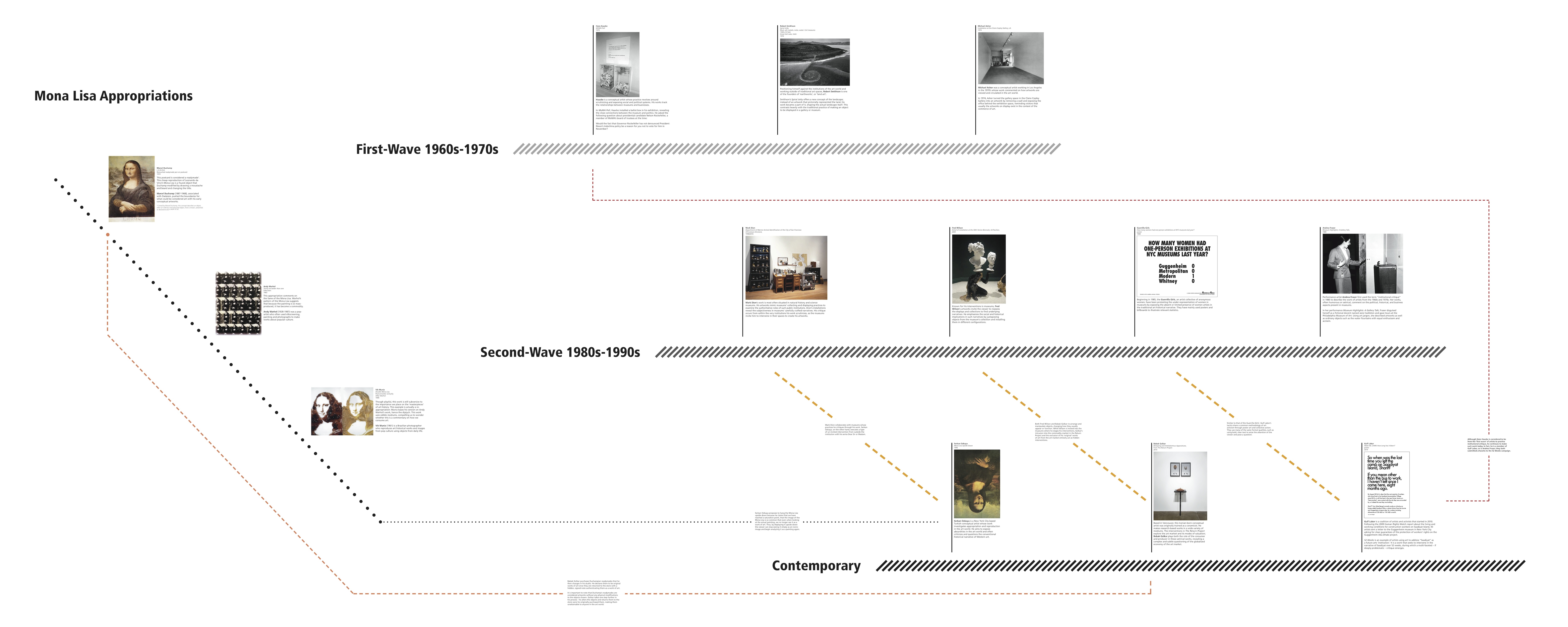
Serkan Ozkaya
This series of letters between Serkan Ozakaya and various cultural institutions involve his proposals for interventions or reproductions of certain art pieces. He asks the Louvre to hang Leonardo da Vinci’s Mona Lisa upside down for a few days, the MoMA to display Piet Mondrian’s Broadway Boogie Woogie as though it had been vandalized, and the German Chancellery to reproduce Christo and Jeanne-Claude’s Wrapped Reichstag.
This series critiques the idea of the ‘genius artist’ and their role in the western art historical narrative by documenting attempts to intervene in the museum’s support of that narrative. These letters and his other works often make art historical references satirically; Ozkaya explains that he is “keeping a critical distance and bringing everything down to earth- even the masterpieces, even the genius, even that whole narrative of art history.” The tone of his letters, and their public display, allow the viewer to consider these narratives and to not simply accept them, to question masterpieces, their prominence and perhaps their merit.
While Dear Sir or Madam may at first seem to be merely witty, Ozkaya is subverting his communication with the institutions he is scrutinizing in making these private conversations public. These letters are not merely gestures but rather serious proposals – while he is not necessarily expecting these institutions to accept, he would readily carry out the interventions and reproductions if they did.
Ozkaya engages with the institutions by positioning himself as an individual up against the cultural authorities he challenges in his proposals:
What I always try to do is situate the individual facing the institution, which is always bigger than you, bigger than human size, and has been there and [is] anticipated to be there after you… even the definition of an institution is that it’s something almost inhuman that’s been there and that is going to be there. It’s like a fact that you have to accept, so my strategy is to sort of imagine to turn it upside down for a second, not longer than that- you know, if you really turn it upside down, then you start yet another institution. So you just imagine the collapse of it, or you just imagine the opposite of it, or you just imagine ridiculing it.
Babak Golkar
The artist made this coin-collector from the remnants of a flowerpot, and this inkwell from pieces of an Indonesian mask. Both belong to a larger series known as The Return Project. These objects and the photographs document Golkar’s manipulations of cheap objects bought from large chain stores. In each case he purchased an object, photographed it, altered it, photographed it again, and returned it to the store. The return policy on the receipts from his purchases determined how much time Golkar could work on a piece in his studio.
Unlike a Duchamp “readymade” (an ordinary object that an artist determines to be art), Golkar intervenes and changes these objects. Golkar claims that the stores always accept the returned objects and that he includes a hidden, signed note declaring the object to be an original work of art. He thus designates these modified objects “art” – but ensures their unattainability in the art world, as he has returned the ‘originals’ to the commodity (non-art world) market. Our only access to the work from within the art world is through fragments of the original object after Golkar’s manipulations, alongside documentation of the object before and after these manipulations. Is what we see in the exhibition also art?
Golkar’s process demarcates the art market and its modes of valuation as an “institution.” He plays both the role of the consumer and producer, subtly questioning the economy of the art market. Thus, Golkar intervenes from within the very institution he critiques. How does he reconcile critiquing a system from which he benefits? Golkar writes:
I like the idea of performing systems because it proposes the idea that to legitimately criticize something you have to be part of it.
Gulf Labor: 52 Weeks
The images on these walls are all by different artists, posted on-line weekly over the course of a year. Gulf Labor is a ‘coalition of artists, writers, and activists’ that seeks to put pressure on the cultural institutions on Saadiyat Island, by boycotting the Guggenheim Abu Dhabi, with the end goal to better labor conditions, ultimately through a collaboration with the museum. With Gulf Labor’s highly political agenda, their 52 Weeks campaign is first and foremost activism. Still, in 52 Weeks artists make art to address “Saadiyat” as a cultural “institution.” Over the course of the year-long project, a multi-faceted, often inconsistent, institutional critique emerges.
While the other two examples in this exhibition invite us to consider institutions outside this gallery (such as the museum and the commercial art market), this example speaks directly to the viewer’s immediate context. As members of one of the institutions on Saadiyat Island, seeing the 52 Weeks permits us to feel what it means to be the subject of an institutional critique and thus to respond to the work from within the critique process, much like a museum director must do with Ozkaya’s letters, or an art dealer must with Golkar’s projects.
Critics of 52 Weeks point out that it does not demonstrate a nuanced understanding of the facts or the context. Some describe the images and texts as reductionist, suffering from a limited cultural perspective. Curator Okwui Enwezor writes that Gulf Labor’s tactics reveal an “inability to engage the larger complexities of the geopolitics of art, much of which they seek to smooth away.”
Looking at 52 Weeks as a whole, one sees simplistic, incendiary, and juvenile attacks alongside meditations on human experience, and capitalism in cultural projects: Gulf Labor does not put forth a single position, a fact that complicates the reading of 52 Weeks as solely “activist.” As with all of the works in this exhibition, viewers must each assess whether or not this intervention fairly identifies “the institution.”